Three Days in Paris - The Perfect Itinerary for the First-Time Visitor
- ellen
- Aug 28, 2023
- 19 min read
Updated: Apr 13

Have you been dreaming about taking that trip of a lifetime to Paris? It's finally becoming a reality and you've booked your flights. The longer you can be in The City of Light the better, but if you only have a few days, this article will help you make the most of your time.
Paris is the most visited city in the world. No surprise. Its graceful architecture, cultural attractions, beautiful parks and tree-lined boulevards lure the 44 million visitors it welcomes each year. If this is your first time and you only have a few days, you'll want to maximize every minute. This three-day itinerary will take you to the major sites and areas in the city that a first-time visitor shouldn't miss. it doesn't include museums, so if there is a museum you absolutely need to visit, follow my advice at the end of this article. Bon voyage and happy discovering!
A Little Orientation
Paris is divided into 20 arrondissements, or districts, that fan out in a snail pattern on both sides of the Seine River. The ring road known as La Périphérique circles this central core. The north side of the Seine is the Right Bank and the south side is the Left Bank. Each arrondissement seamlessly spills into the next one, but each has its own character.

One of the advantages of Paris is that, as far as major world cities go, at 40 sq. miles, it's small and extremely walkable. Compare that to New York City's 302 sq. miles and London's 600 sq. miles! It has an efficient subway system, le métro, a good bus system, and lots of opportunities to rent bikes. It's also, in my opinion, the most beautiful city in the world.
Where to Stay?
As a first-time visitor, you'll want to stay as close to the Seine as possible because you'll visit both banks, and staying centrally will save time whether you take public transportation or you explore on foot. I love to stay ON the Seine, on the charming Ile St. Louis, or in the 5th or 6th arrondissement just to the south. Many visitors stay in the Marais which hugs the right bank, but you really can't go wrong in arrondissements 1 - 8. Hotel and apartment rates tend to be competitive compared to other large European cities, but do your research on sites like Trip Advisor, Booking.com, or Expedia.
Arriving in Paris
Paris has two major airports, Charles de Gaulle (CDG) (you might also hear it referred to as "Roissy", a nod to the village northeast of central Paris in which it's located) and Orly (ORY) to the south. Most international flights from North America arrive at CDG. There are a number of ways to get into central Paris from the airports ranging from taking the train to shuttles to taxis. I often take the train, but I wouldn't advise that for a first-time visitor. Splurge and take a taxi which will cost about 60 - 75 Euros from CDG, but will be well worth it, especially if you're jet lagged. Most taxis take credit cards (cartes bancaires) but ask the driver just to make sure.
If you arrive by train from another European city, there is a métro (subway) station in all the major train stations so you can choose to take the métro or a taxi to your lodging.
Ready to Explore!

Now that you've checked into your hotel or apartment and deposited your luggage, you're ready to set out. This itinerary is based mostly on exploring on foot, but the métro is an efficient way to travel longer distances. See information about the métro at the end of this article.
I had the privilege of showing Paris to my granddaughter who had just graduated from college. Is there really a "perfect" itinerary and is this it? No, it depends on many things, but the one laid out below is roughly what we did over our three days, so I know it's doable (and a side benefit is that you'll sleep well)!

Your Three-Day Itinerary At-a-Glance
Day One - L'Hôtel de Ville to the Eiffel Tower and back
Day Two - Montmartre, Blvd. Haussmann, Ile St. Louis and Ile de la Cité
Day Three - The Champs Elysées, the Marais, the 5th arrondissement, the Luxembourg Garden
Day One - L'Hôtel de Ville to the Eiffel Tower
L'Hôtel de Ville - Louvre - Tuileries Garden - Place de la Concorde - Avenue Rapp - Eiffel Tower - Seine boat ride

Begin your walk at the Hotel de Ville, the beautiful Paris town hall on the right bank. This is one of my favorite buildings in Paris.

If you're there on a weekend or a holiday, pop into the little park, Jardin des Combattants-de-la-Neuve at the south end of the building.

Continue walking west along the Seine.


You'll see the 170 ft. Tour St. Jacques to your right. This gothic structure is all that's left of a 16th-century church and is a national historical landmark today.
To your left will be Ile de la Cité, the geographic center of Paris. You can't miss the Conciergerie, the imposing former Revolutionary prison, now a museum, where Marie Antoinette was imprisoned prior to her death.

Continue heading west along the Seine and cross the street on rue du Louvre. The Louvre in all its glory will then be on your left. Walk through the arches to the central courtyard marveling at the beautiful architecture and of course I.M. Pei's pyramid.

Be sure to take pictures of the Pyramid!


Continue walking through the Tuileries Garden created by Marie de Medici in 1564 and opened to the public after the French Revolution. Enjoy the statues and foliage, beautiful in any season.

Don't forget to look up for a peek at the Eiffel Tower!


If by this time you need a rest, stop for a beverage and a snack at La Terrasse de Pomone.
Linger at the Place de la Concorde, (be careful crossing!) taking in this historic and beautiful square. You can stand at the base of the Luxor Obelisk, gifted to France by Egypt in the first half of the 19th century. Its twin still stands guard at the Luxor Temple in Egypt.

From Place de la Concorde, make your way back toward the Seine and cross to the left bank on Pont Alexandre III (my favorite bridge).

Stand for a moment and marvel at the 56 ft. high pillars, each of the four paying homage to a different era in French history.

The nymphs in the center on each side of the bridge are memorials to the Franco-Russian alliance. The one (pictured below) on the west side of the bridge has a relief of the arms of Paris while the opposite one has the arms of Imperial Russia.

Continue crossing the Pont Alexandre III to the Left Bank and turn right. Continue along the Seine and turn left on Avenue Rapp. The Pont de l'Alma will be on your right.

Continue to #29 Avenue Rapp for a view of the iconic door designed by the architect Jules Lavirotte in 1901 which had tongues a-wagging for quite a while!

For one of my favorite views of the Eiffel Tower, cross Avenue Rapp to rue du Général Camou and turn right on avenue de la Bourdonnais. If you're hungry or thirsty, stop at any of the cafes along this street. Finally, turn left on rue de l'Université and take in both the beautiful architecture as well as the Eiffel Tower.

It's a wonderful photo op!

At that point, it you still have any motion left in your legs, you could continue to walk over to the Trocadéro Gardens for yet another impressive view of the Grande Dame (as the Eiffel Tower is sometimes called), but if you're a Boomer like me, you may choose not to stray that far.
This is one of the views you'll have from Trocadéro, but you'll have to decide if it's worth the extra steps.

Whichever option you choose, spend some time walking through and lingering in the Champs de Mars, the large green area in front of the Eiffel Tower.
By now you might be ready for a break. My advice, especially if the weather is good, is to hop on the Batobus and cruise back up the Seine. The advantage of the Batobus is that it's hop-on, hop-off and doesn't require a round trip. Take it to whatever stop is closest to your hotel or apartment.

If the Batobus isn't an option, hail a cab or arrange an Uber or a G7 (more about the G7 below).
Beaux rêves (Sweet dreams)!

Day Two - Montmartre to Île St.-Louis
Montmartre - Galleries Lafayette - Ile St. Louis - Ile de la Cité

Head north to begin your day in Montmartre.

Whether you take the métro or Uber/taxi up, begin Day Two at the Anvers métro station which, as you walk up rue de Steinkerque, gives you a jaw-dropping view of Sacré Coeur.

Unless you're a glutton for punishment, take the funiculaire up to the base of Sacré Coeur. The trip takes 90 seconds and you avoid the 197 steps! The funiculaire takes a métro ticket which can be bought right there.

Once you arrive at the base of the basilica, walk around to the front and spend a few minutes looking at it, appreciating its beauty. It's composed of travertine limestone quarried in France not far from Paris. This particular limestone exudes calcite when it rains, making it look almost pure white. It's this soft quality of the stone that I love. The basilica is open from 6:30 am to 10:30 pm and free to enter. it may also be possible to climb the dome; check when you arrive.
Turn around and you'll have a panoramic view of Paris.

From Sacré Coeur walk over to the Place du Tertre. This is the iconic square where artists draw portraits of tourists and sell their paintings. In the winter the Place is empty but for the artists but during the rest of the year the neighboring cafés set up tables in the square.
Take rue du Chevalier-de-la-Barre from Sacré Coeur, turn left on rue du Mont-Cenis and make your way around to the square.

Place du Tertre without the cafés...

With the cafés...


Have breakfast at any of the cafés.
From Place du Tertre, head down rue Norvins toward the famous café, Le Consulat, stopping to buy a few souvenirs along the way.


Turn right at Le Consulat and go down the hill through the intersection and you'll soon see the tiny vineyard on your right. A vineyard in Paris? Yes; you can read about it here.

Head back up the street to the beautiful La Maison Rose and turn right onto the rue de l'Abreuvoir.

This is one of my favorite streets in Paris. As you walk down rue de l'Abreuvoir toward Place Dalida, turn around and this will be your reward.

Dalida was an Egyptian-born actress and singer who moved to France at the age of 21. She sold 40 million records throughout her career and was wildly popular in France until her death in 1987.
From the Buste de Dalida, walk down rue Giradon to the intersection of the rue Norvins. Turn left and walk toward the wall where you'll see a curious sight. This whimsical sculpture in the Place Marcel Aymé is the result of a short story by the French author of the same name about a man who could effortlessly pass through walls....until he couldn't!


Walk down Avenue Junot and turn left on the cobblestoned Via Léandre. This little oasis is some of the most expensive real estate in Paris.

Retrace your steps on Avenue Junot and turn right on rue Giradon where you'll soon come upon the historic Moulin de la Galette on your right. This windmill was built in 1622 and is one of the few remaining in Paris today.

Cross rue Lepic and walk down rue d'Orchampt, the tiny alley which soon widens and leads you to the lovely Place Émil Goudeau.

Continue down rue Ravignan to rue des Abbesses and turn left following the map below to the Place des Abbesses.

At 118 ft. below ground and 176 steps, Abbesses is the deepest métro station in Paris. If you ever arrive at this station, remember to take the elevator up as you'll be committed once you start climbing!
The Hector Guimard design is one of only two remaining glass "dragonfly" métro entrances and is worth the trek in and of itself.

But the main attraction of the Place des Abbesses is the "mure des je t'aime" or I Love You wall which is comprised of 612 tiles with the words "I love you" in 250 languages. It always draws a crowd.

You can end your tour of Montmartre there or you can walk another 10 minutes down the hill to the famous Moulin Rouge. This area on Blvd. Clichy has a very different feel from where you've just been!

From here you're going to do some retail therapy which is only about a mile south in the 9th arrondissement. But hail a cab or order a G7 and save your legs.
The Passages and Galeries Lafayette
Before the mid-19th century and Baron Haussmann's total recreation of the city, Paris streets were narrow, mud-filled lanes, there were no sewers and horses kicked up dirt and mud everywhere. The bourgeoisie wanted somewhere they could eat and shop without getting their clothes dirty, so the Passages were built. They were life-savers for the upper class, protecting them from the elements. And they were the precursors to the modern day mall! in the early to mid-1800's about 150 Passages dotted the city; today only a couple dozen remain. Two of my favorites are Passage Jouffroy and Passage des Panoramas, just across the street from each other on Blvd. Montmartre. Spend a few minutes window shopping in each one. You can read more about them here.
From there, head west on Blvd. Montmartre to Galeries Lafayette, one of Paris' upscale department stores. It's about a 10-minute walk along Blvd. Montmartre which turns into Blvd. Haussmann.

The domed ceiling is beautiful any time of the year, but if you're fortunate enough to be there during the Christmas season, enjoy the animated displays in their windows and don't miss the beautiful Christmas tree suspended inside.
Don't miss the opportunity to go up to the roof for a panoramic view of Paris including the opera house, Opéra Garnier, just below.
Note: if retail therapy isn't your thing, you can bypass the Passages and Galeries Lafayette and go directly to Ile St.-Louis and Ile de la Cité.
From Galeries Lafayette, take the #7 métro line from Chaussée d'Antin La Fayette just outside the door to the store, to Pont Marie, just across the Seine from Ile St.-Louis.
This is roughly the route you'll take on the métro.

Cross the Seine on Pont Marie and stop to enjoy the boats passing beneath you as well as the beautiful architecture of the buildings along the Seine.
Continue crossing the bridge and keep going one more block until you arrive at rue Saint-Louis en L'ile, the main street that cuts the island in half lengthwise. Turn right and do some window shopping as you make your way to my favorite café in Paris, the St. Regis. If the weather is nice, try for one of the few tables outside.


After lunch, walk completely around the island; it will take less than 30 minutes.
This is the view of the Panthéon from Ile Saint Louis.


Cross the Pont Saint Louis, the pedestrian bridge linking the Ile St.-Louis with Ile de la Cité and walk toward Notre Dame. As of this writing, Notre Dame is still undergoing repairs from the devastating fire of April 15, 2019. During the reconstruction, there is a changing exhibition of photos on the street documenting the fire and the heroic work to repair it which is worth your time to read.


Spend a few minutes in the square in front of Notre Dame and see if you can spot the the "Point Zero" marker, the point from which all distances are measured.
From there, make your way to the flower market (Marché aux Fleurs) and spend a few minutes strolling through it.


Continue walking along the river on the Quai de l'Horloge to the lovely Place Dauphine which was created in 1607. This little square is a true oasis in the midst of this busy area. Sit on one of the benches and watch the men play boules, the French form of lawn bowling, or have a beverage at one of the cafés and admire the beautiful architecture of the buildings surrounding the square.



Your last stop of the day is a must-see - the Pont Neuf. In French the word "neuf" means both "new" and the number nine. Which is it? Is it a new bridge or was it the 9th bridge built in Paris? The answer is at the end of this article.
The statue is Henri IV who created the Place Dauphine as well as many other landmarks in Paris including the Place des Vosges where you'll go tomorrow.

From here, make your way back to your apartment or hotel. You've covered quite a bit of ground today!
Day Three - Champs Elysées to the Luxembourg Garden
Champs Elysées - Arc de Triomphe - le Marais - Place de la Contrescarpe - Panthéon - Luxembourg Garden

If you're lucky enough to be in Paris around Christmas, this is how you may experience the Champs Elysées.

You can walk all the way down to the Arc de Triomphe from Place de la Concorde, but if you want to save your legs for the rest of the day, I'd recommend taking the métro to the Franklin D. Roosevelt stop not quite halfway down. You'll have plenty of luxury stores to tempt you and you can enjoy breakfast at one of the many elegant cafés. Then find the underground walkway to visit the Arc de Triomphe. You might see the word "Etoile" meaning
"star". This represents the 12 avenues that emanate in a star pattern from the monument.



Commissioned by Napoléon Bonaparte in 1806 and dedicated to his Imperial army, the Arc de Triomphe is the resting place of France's unknown soldier.

If you're so inclined, you can buy a ticket to climb the 284 steps. I did it one night and and was rewarded by this sight.

And this one.


Le Marais

The word "marais" in French means "swamp". And indeed this section of Paris, just north of the Seine, was marshland in the Middle Ages. The area that is now part of the 3rd and 4th arrondissements was divided into tiny parcels of land that produced vegetables for the residents of Paris.
Since then it has undergone major gentrification and today it's home to many "hôtels particulars" or old villas as well as a number of museums. It's one of the most popular areas of Paris for tourists.
From the Champs Elysées, take the métro line 1 to the stop St. Paul where you'll begin your walk in the Marais.
This is roughly the route that the métro will take you.

This is your walking route through the Marais.

From the St. Paul métro, walk west on rue St. Antoine which becomes rue François Miron.

There, at #11-13 you'll see these two half-timbered houses. These houses, probably originally shops, are considered the oldest houses still standing in Paris, dating to the beginning of the 15th century.

Look closely and you'll see a plaque on each one; the House of the Reaper (Maison à L'Enseigne du Faucheur) and the House of the Sheep (Maison à L'Enseigne du Mouton ).
Return to the 21st century and look across the street at Aux Merveilleux de Fred. These meringue delights are coated with whipped cream and a variety of coatings and will make you think you're eating clouds.
Head north across the rue de Rivoli to the rue Vieille du Temple and continue walking, enjoying the shops and cafés.

Just before the well-known and excellent restaurant, Les Philosophes, look to your right down the quaint rue du Trésor.

Continue to the rue des Rosiers and turn right and you'll find yourself in the heart of the Marais. The Marais was a high-class residential area in the 17th and 18th centuries, but after the Revolution, it became a commercial area and many Jewish people, mainly from Eastern Europe, settled there. Today this is an area rich in the Jewish culture including boasting a wonderful array of Jewish cafés and pastry shops.

If you're tempted, stop at L'As du Falafel, the famous Jewish deli which always has a line.
Keep walking along this colorful street and you'll find an alleyway on your left. This will lead you to the Jardin des Rosiers Joseph Migneret. Of the many parks and gardens in the Marais, this is one of my favorites. Joseph Migneret was a teacher in a nearby boys' school during World War II. He was instrumental in saving many children from the area but of course many could not be saved. There is a plaque as you enter the garden with the names and ages of the children who were lost to the Nazis, some of whom were just days old. Spend a few minutes in this lovely, quiet oasis.

Don't miss this interesting fig tree!
After you've rested in the garden, continue on the rue de Rosiers, turn left on the rue Pavée then right on the rue des Francs-Bourgeois.

Your route will take you to this lovely scene, the Place des Vosges.

Originally named the Place Royale, this beautiful square was built by King Henri IV from 1605 - 1612. You'll see that this square is very different from the Place Dauphine, also built by Henri IV. The main distinctive feature is that every building on the square is of the same design, the same red brick and the same pitched roofs.
In the center of the square you'll see a statue of Henri IV's son, Louis XIII and on a nice day, the square will be full of Parisians taking advantage of the sun.

There are several restaurants and cafés which ring the square; this would be a good lunch break. My granddaughter and I had a good lunch at Café Hugo at the northeastern corner.
Place de la Contrescarpe
Exit the Place des Vosges from the southern door to cross the river to the 5th arrondissement.


If you want to save your legs, walk down to the Sully-Morland métro and take line 7 to the Place Monge stop.
From Place Monge, walk over to Place de la Contrescarpe.

You're now in the heart of the Latin Quarter in the 5th arrondissement.

If you're an Ernest Hemingway fan, walk a few steps up rue Cardinal Lemoine to #74. This is where Hemingway and his first wife Hadley rented a third-floor apartment soon after they moved to Paris in 1922.

You might want to take in the ambiance of this lively square with an Apérol Spritz like I did on a beautiful late September day.
When you've gotten your second wind, walk north on rue Decartes and turn left on rue Clovis.

On your right will be the Eglise Saint-Etienne-du-Mont which houses the relics of Sainte-Geneviève, the Patron Saint of Paris (and whose steps are famous from the Woody Allen movie Midnight in Paris).

Just ahead on your left you'll arrive at the imposing Panthéon.

The history of the Panthéon is almost as varied as the history of Paris itself. Louis XV commissioned it in the mid-18th century and intended it to be a church dedicated to Sainte- Geneviéve. Since then it has changed from church to mausoleum and back several times until the late 19th century when it was designated once and for all a mausoleum. Today about 90 notable French citizens are buried in its crypt.
Your next stop is your last - and a favorite of mine. Head straight away from the Panthéon on rue Soufflot and you'll end up at the Luxembourg Garden. Paris has about 500 parks and gardens and this one is a true gem.


Soon after the turn of the 17th century Marie de Medici, the widow of King Henry IV, decided to build a replica of her beloved Pitti Palace in Florence, Italy. She commissioned the construction of the Luxembourg Palace to serve as her residence when she tired of the Louvre. Today the Palace is the home of the French senate.
She had 2,000 elm trees planted and directed gardeners to build a park similar to her childhood gardens in Florence.

Today its 57 acres include tennis courts, a basketball court, cafés, miles of beautiful, groomed, tree-lined walks - and 106 statues, including one of Marie herself.

As if the park itself isn't stunning enough in any season, the most captivating feature is the Marie de Medici fountain which Marie had built in 1630.

If you're lucky, you'll see some ducks enjoying it like this mother keeping close watch over her little one.

I could sit alongside it for hours! You can read more about this special garden here.
Your three-day itinerary is now complete. On one hand, you've barely scratched the surface, but on the other, you've gotten a good taste of this beautiful city. Hopefully this trip will entice you to start planning your next visit!
Practical Tips
The Paris Métro
You may hear mixed reviews of the métro. I use it quite often and have had no problem with it. It's especially convenient when you need to go a distance or if traffic is heavy. Download the Bonjour RATP app on your phone. You enter your starting and ending point and it will give you real-time métro and bus information. To navigate in the stations, look for the end point of the line you're traveling and follow the signs for that stop. For example, if you want to travel on Line 1 from the Louvre-Rivoli to Georges V, you'll look for the sign indicating the final stop in the direction you want to go. In that case, it's La Défense. If you want to travel from Georges V to the Louvre, you'll take the train toward Château de Vincennes, the eastern terminus of the line.

G7
The G7 that I refer to above is Paris's equivalent to Uber. Although Uber operates in Paris, I tend to use the G7 because it utilizes the Paris taxis. I've found them to be just as reliable as Uber. You can download the app on your phone.
Museums
If you must visit any museums during your first trip to Paris, be sure to book ahead online. Paris museums are busy 12 months of the year, but depending on the time of year you visit, the lines may be prohibitive if you don't book ahead. There are a number of sites from which to choose to purchase tickets, but I generally use Tiqets.com.
Money
As with just about any other major world city, you won't need much cash. Visa (also called the "Carte Bleue" in France) is widely accepted as are several other major cards. American Express is accepted less often. If you want cash - and I do carry some Euros when in Paris - your best bet is to use an ATM machine.
Safety
As major cities go, Paris is relatively safe, but you should always take measures to safeguard yourself and your belongings wherever you travel. I carry a cross-body purse when I travel and I always keep one credit card separate from the others. The métro is generally safe, but especially when it's crowded, I make sure my purse and any bags I'm carrying are against the front of my body. Be especially watchful in high tourist areas like Montmartre and the Louvre.
Restaurants
I've intentionally not suggested restaurants for dinner. Your choice is almost endless, ranging from take-out to elegant dine-in. And if you're in an apartment, you might want to stop at a market and create your own masterpiece! In France as in other European countries, menus and prices are posted outside each restaurant which makes your choice easier.
The Pont Neuf - New or Ninth?
Although it's the oldest bridge still standing across the Seine, the "Neuf" means "new". Construction began in 1578 and it opened to traffic in 1604. It was the first bridge of its day not to have shops lining it, hence the reference to "neuf" or "new".
And Finally...
Remember, if this to too much walking for you, the métro or a city bus are good alternatives to get from place to place. If you'd rather get an overview of the city before you set out on foot, you can opt for Paris's version of a hop on/hop off bus, called the BigBus. However you choose to experience this incredible city, savor every moment of your visit!
➜ Top Tips
Look up and look back. Often there are beautifully-sculpted elements above doorways or you may get a glimpse of the Eiffel Tower when you least expect it. Look back from time to time especially if you're walking away from a major landmark.
Don't hesitate to find a bench and rest your legs. As you see, this itinerary requires a lot of walking. Spend a few minutes watching the Parisian world go by while you catch your second breath.
Most Parisians, especially in the tourist sector, speak English. Don't hesitate to ask questions or ask for directions. The old reputation of Parisians being aloof and unfriendly is a thing of the past.
















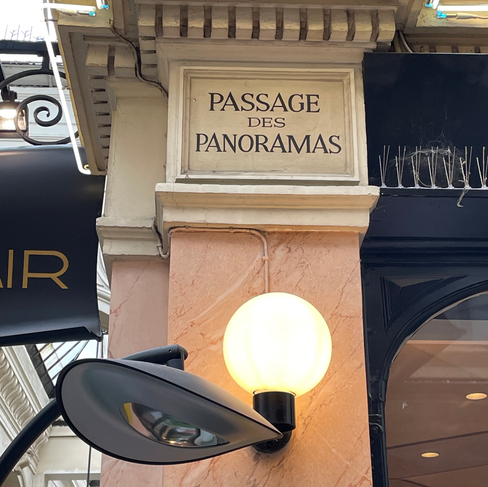





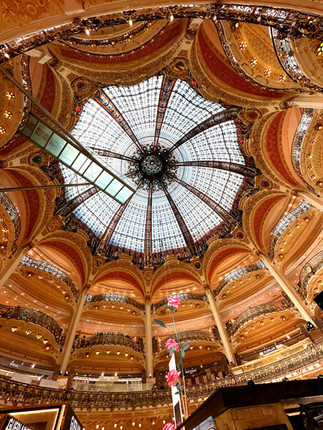



















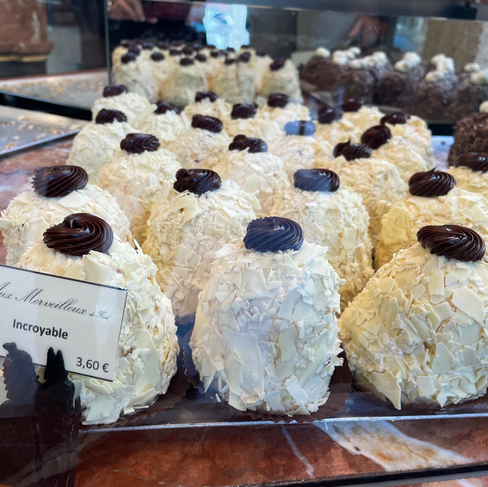







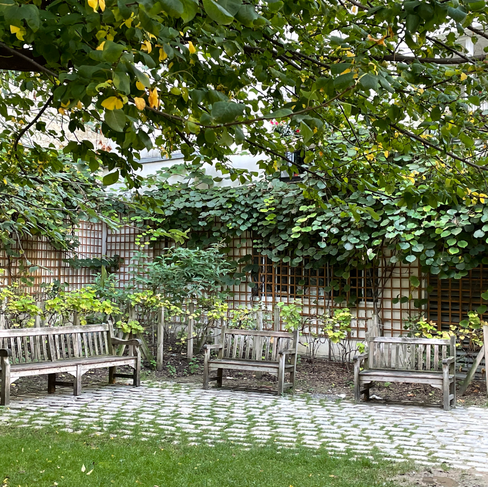











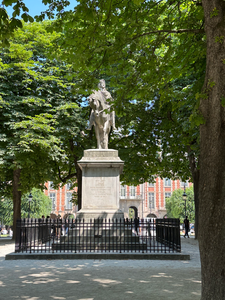






Traveling to Paris is always a dream come true. The city's beauty, culture, and rich football history make it a must-see destination. Watching PSG live is a highlight every time I visit. The energy from the fans is incredible! But even when I’m home, I never miss a match—I stream all of PSG's games on livetv704.me , so the excitement continues wherever I am!